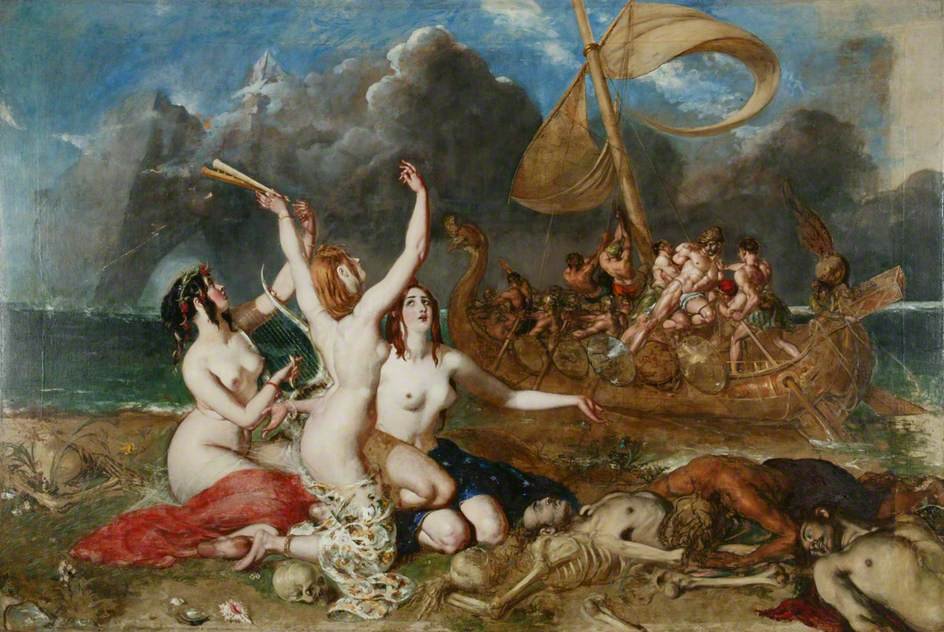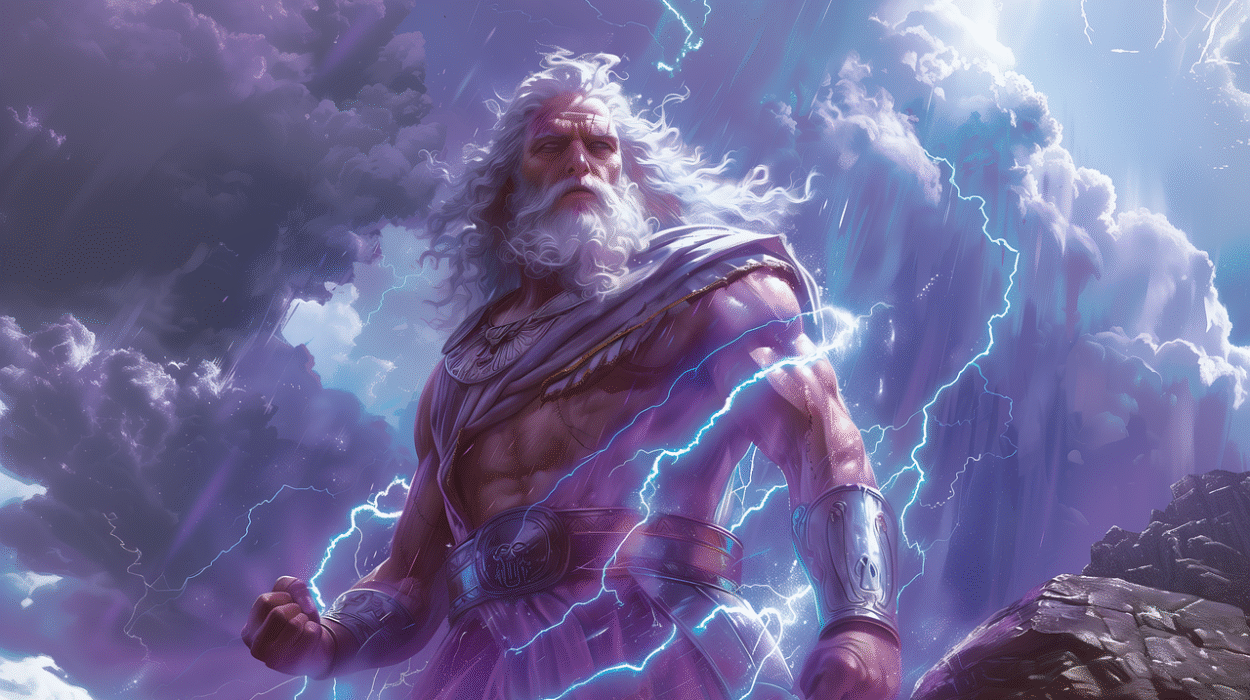Long before human beings built temples, cities, or civilizations, they stood in awe of the world beneath their feet. The soil that gave crops, the mountains that touched the heavens, the rivers that quenched thirst, the forests that provided shelter—all seemed alive, breathing, and eternal. In the ancient imagination, the Earth was no lifeless rock but a divine being, a mother who bore and nourished all creatures. In Greek mythology, this mother had a name that carried the weight of creation itself: Gaia.
Gaia, often spelled Gaea, was not merely a goddess among others—she was the very Earth itself. She was the primordial deity who came into existence at the dawn of creation, one of the first beings to emerge from the swirling chaos of nothingness. To the Greeks, she was the bedrock of existence, the one who gave birth to gods, titans, monsters, and mortals alike.
Her story is not just mythological but also symbolic. Gaia represents the eternal bond between humans and the natural world, the awareness that life is only possible because the Earth provides. She is both nurturing and wrathful, a giver of life and a witness to destruction. Through her, mythology bridges into philosophy, ecology, and even science, reminding us of the profound interconnection between humanity and the living planet.
The Birth of Gaia from Chaos
Greek mythology begins not with gods upon thrones but with Chaos, a vast, formless void from which everything emerged. Chaos was not disorder in the modern sense but rather a boundless, undefined state of being. From this void arose the first primordial deities: Gaia (Earth), Tartarus (the Underworld), Eros (Love), Nyx (Night), and Erebus (Darkness).
Gaia emerged as the living embodiment of Earth. She was not born from another deity but arose spontaneously, complete and eternal. Unlike later gods who possessed specific domains, Gaia was the domain itself. She was mountains, seas, plains, and valleys. She was the womb of existence, the stable ground upon which all things would come into being.
In Hesiod’s Theogony, one of the earliest written accounts of Greek mythology, Gaia is described as the foundation of the cosmos. Without her, there would be no place for the sky, the seas, or mortal life. She was the solid body upon which the drama of gods and men unfolded.
Gaia and the Birth of the Sky
After her emergence, Gaia brought forth Uranus (the Sky) to cover her and become her eternal partner. Their union was both symbolic and cosmic: the marriage of Earth and Sky, the two most fundamental aspects of existence. From their embrace came some of the most powerful and legendary beings in mythology: the Titans, the Cyclopes, and the Hecatoncheires (Hundred-Handed Giants).
This union illustrates a deep truth recognized by ancient people: the Earth and the heavens are inseparable. Rain falls from the sky to nourish the soil, crops rise from the land toward the sun, and the cycle of life depends on this eternal relationship. In myth, Gaia and Uranus were more than deities—they were the eternal balance of the natural world.
Yet, as mythology often reminds us, even the most sacred unions are fraught with conflict. Uranus, fearful of his powerful offspring, imprisoned them within Gaia’s body, deep within her womb. The Earth Mother, writhing in pain from this burden, sought relief. She called upon her children to rise against their father, and only one dared to obey: Cronus, the youngest Titan.
With a sickle fashioned by Gaia, Cronus ambushed Uranus and overthrew him, severing the sky from the earth. In this act of rebellion, Gaia was both mother and instigator, guiding her children to claim power. From Uranus’s blood that fell upon the soil, more beings were born: the Erinyes (Furies), the Giants, and the Meliae (ash tree nymphs). From his severed parts cast into the sea arose Aphrodite, goddess of love and beauty. Thus, Gaia’s role in creation was never passive; she was the ceaseless wellspring of life, change, and renewal.
The Mother of the Titans
The children of Gaia and Uranus, the Titans, were among the most powerful beings in Greek mythology. They represented the primal forces of nature and time: Oceanus (the ocean), Hyperion (the sun), Theia (light), Coeus (intelligence), Phoebe (prophecy), Cronus (time), Rhea (fertility), and many others.
Through the Titans, Gaia extended her influence across every aspect of existence. She was not only the Earth beneath the feet of mortals but also the mother of cosmic powers that ruled the seas, the heavens, and the underworld. Her children embodied the vastness of the world, and through them, Gaia’s presence extended into every corner of Greek cosmology.
Yet, Gaia’s role as mother was not only about nurturing. She was also deeply entangled in the struggles for power that shaped the mythological world. When Cronus overthrew Uranus, he took his father’s place as ruler. But Gaia, prophetic and wise, foretold that Cronus too would be overthrown by his own child. Terrified, Cronus devoured each of his offspring as they were born. Still, Gaia’s prophecy could not be undone. Eventually, Zeus escaped, grew to manhood, and overthrew Cronus, fulfilling Gaia’s vision.
Through these stories, Gaia emerges not as a passive Earth goddess but as a figure of destiny and foresight, a force that no god could ultimately escape.
Gaia’s Prophecies and Power
One of Gaia’s most profound roles in Greek mythology was that of a prophetic voice. She was believed to have been the original oracle at Delphi before passing her powers to Themis and later Apollo. In this role, Gaia was not merely Earth but wisdom itself—the deep knowledge embedded in the natural world.
Her prophecies shaped the fate of gods and mortals alike. She foresaw the downfall of Uranus, the defeat of Cronus, and even challenges to Zeus’s reign. She often intervened in conflicts, not with armies but with truth and inevitability. In this way, Gaia symbolized the unshakable laws of nature and time. Even the mightiest gods could not defy her forever.
The Wrath of the Earth Mother
Though often nurturing, Gaia could also be fierce when her children were harmed. One of the most dramatic myths of her wrath is the story of the Gigantomachy, the war between the Olympian gods and the Giants. Born from Uranus’s blood that seeped into her soil, the Giants were fierce and powerful beings. When the Olympians rose to dominance under Zeus, Gaia, angered by the imprisonment of her Titan children in Tartarus, gave birth to the Giants to challenge the new order.
The battle was cosmic in scale. The earth shook, the heavens roared, and the sea boiled as gods and giants clashed. Though the Olympians ultimately triumphed, Gaia’s role as a challenger to their rule showed that she was not simply the submissive ground beneath their feet. She was a force of rebellion, capable of unleashing monsters to humble even the mightiest gods.
Later myths also show Gaia creating the monstrous Typhon, a terrifying creature said to be the deadliest of all. Typhon battled Zeus himself, shaking the cosmos in their struggle. Though Zeus won, Gaia’s role as the bringer of chaos highlights her dual nature: life-giver and life-destroyer.
Gaia in Greek Religion and Cult
Gaia was not only a mythological figure but also a deity of worship in ancient Greece. She was honored as a chthonic goddess—connected to the earth, fertility, and the underworld. Shrines to Gaia were found in places of prophecy and healing, where the earth itself was seen as sacred.
At Delphi, long before Apollo claimed the oracle, Gaia was believed to have spoken through the ground, her wisdom rising like vapor from the depths. Farmers, too, offered sacrifices to her, recognizing that the fertility of their crops depended on the Earth Mother’s favor.
In Athens, altars to Gaia stood alongside those of other gods, acknowledging her as the primal force upon which all others depended. She was less a figure of elaborate mythic worship and more a constant, eternal presence in daily life. Every grain of wheat, every drop of water, every stone was her body.
Symbolism of Gaia: The Living Earth
Beyond mythology, Gaia’s symbolism carries profound meaning. She is the Earth personified, the recognition that all life is interconnected and dependent on the planet. The Greeks, though lacking modern science, intuited that the Earth was not inert but alive with processes that nurtured and sustained existence.
In modern times, this symbolism found new life in the Gaia Hypothesis, proposed by scientist James Lovelock in the 1970s. This theory suggests that Earth functions as a self-regulating system, maintaining conditions suitable for life through complex interactions between organisms and the environment. Though scientific in form, the hypothesis echoes ancient myth: the idea that the Earth itself is a living, responsive being.
Through Gaia, myth and science converge. She is both a deity and a metaphor, both a character in stories and a reflection of ecological truth.
The Legacy of Gaia
Gaia’s legacy endures not only in Greek mythology but also in art, literature, philosophy, and environmental thought. She represents the eternal bond between humanity and the Earth, a reminder that to harm the planet is to wound the very mother who gave us life.
In modern culture, her name is invoked in environmental movements, poetry, and even planetary science. To speak of “Gaia” today is to acknowledge the ancient truth that we are not separate from the Earth but part of her, born of her, and dependent upon her.
The Eternal Mother
In the grand tapestry of Greek mythology, Gaia is both origin and constant. She was there at the beginning, emerging from Chaos. She gave birth to gods, monsters, and mortals. She guided destinies, unleashed wrath, and nurtured life. She is at once gentle and terrible, fertile and destructive, wise and inevitable.
Gaia is not a goddess to be confined to one temple or story. She is the story. She is the soil under our feet, the mountains on the horizon, the seas that cradle the world. To the ancient Greeks, she was divine. To us today, she is still no less sacred, for the truth she embodies is eternal: without Earth, there is no life.
And so, in every breath we take, in every harvest reaped, in every river’s song, Gaia still whispers her story—the story of the living Earth, the Mother who was, is, and always will be.






